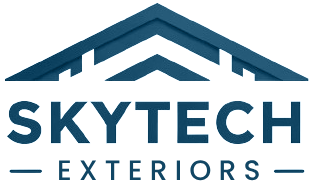Are There Any Government Incentives or Rebates for Roof
Replacement?
When it comes to replacing your roof, the financial
implications can be significant. As you enter the purchase stage and finalize
your decision, exploring government incentives and rebates can help reduce
costs. This article provides a comprehensive overview of available incentives
and how they can benefit you, while ensuring your choice of affordable roofing
or local roofing contractors aligns with your financial strategy.
1. Understanding Roof Replacement Costs
Roof replacement is a major home improvement project, with
costs typically ranging from $7,000 to $12,000, depending on various factors
such as roof size, materials, and labor. According to HomeAdvisor, the average
cost for a roof replacement in the U.S. falls within this range. However, the
potential for government incentives can help mitigate these expenses.
2. Government Incentives and Rebates for Roof Replacement
Government incentives and rebates can significantly reduce
the cost of roof replacement. These programs vary by location and may include
federal, state, or local initiatives. Here are some key options to consider:
1. Federal Tax Credits
The federal government offers tax credits for
energy-efficient home improvements, which can include certain types of roofing
materials.
Energy Efficient Home Improvement Credit: Under the
Inflation Reduction Act of 2022, homeowners can receive a tax credit of up to
30% of the cost of qualifying energy-efficient upgrades. This includes cool
roofs and roofing materials that meet Energy Star requirements.
Statistical Insight: According to the U.S. Environmental
Protection Agency (EPA), Energy Star-certified roofing products can reduce
cooling costs by up to 10-15% annually.
Residential Renewable Energy Tax Credit: While primarily for
solar panel installations, this credit may also apply if your new roof supports
the installation of solar panels. The credit covers 30% of the installation
costs.
2. State and Local Incentives
Many states and local governments offer additional rebates
and incentives for energy-efficient home improvements.
State Rebates: Some states provide rebates for roofing
materials that improve energy efficiency. For example, California and New York
have state-specific programs that offer rebates for cool roofs and reflective
roofing materials.
Statistical Insight: In California, the California Energy
Commission’s COOL ROOFS program offers up to $500 in rebates for qualifying
energy-efficient roofing materials.
Local Incentives: Local municipalities and utility companies
often have their own programs to encourage energy-efficient home improvements.
These can include rebates, grants, or low-interest loans for roof replacements
that enhance energy efficiency.
3. Utility Company Rebates
Many utility companies offer rebates for energy-efficient
home improvements, including roofing. These programs are designed to reduce
overall energy consumption.
Utility Rebates: Check with your local utility company to
see if they offer rebates for energy-efficient roofing materials. These rebates
can sometimes be combined with state or federal incentives for additional
savings.
Statistical Insight: According to the American Council for
an Energy-Efficient Economy (ACEEE), utility company rebates can reduce the
cost of energy-efficient upgrades by an average of 10-20%.
4. Home Improvement Grants
While less common, some grants are available for home
improvements, including roof replacements. These are usually aimed at
low-income households or specific populations.
Federal and State Grants: Various federal and state programs
provide grants for home improvements that include roofing. These grants can
help cover part of the costs but often have strict eligibility requirements.
Statistical Insight: The U.S. Department of Housing and
Urban Development (HUD) offers the Weatherization Assistance Program, which can
provide funds for energy-efficient home improvements, including roof
replacements, for eligible low-income households.
3. How to Take Advantage of These Incentives
To maximize the benefits of government incentives and
rebates for your roof replacement, follow these steps:
1. Research Available Programs
Start by researching federal, state, and local incentives.
Websites like the U.S. Department of Energy (DOE) and Energy Star provide
information on available programs and eligibility requirements.
2. Consult with Your Contractor
Discuss available incentives with your local roofing
contractors or Charleston roofing company. They often have experience with
these programs and can guide you on which materials qualify for rebates.
3. Gather Necessary Documentation
Ensure you keep all receipts and documentation related to
your roof replacement. This will be necessary when applying for tax credits or
rebates.
4. Apply for Incentives
Follow the application procedures for each program. This may
include submitting forms, providing proof of purchase, and meeting specific
deadlines.
Statistical Insight: A study by the National Renewable
Energy Laboratory (NREL) indicates that homeowners who take advantage of
available incentives can save an average of 20-30% on the cost of
energy-efficient home improvements.
4. Considerations When Choosing a Roofing Contractor
As you approach the final decision for your roof
replacement, selecting the right contractor is crucial. Here are some tips:
1. Check Qualifications
Ensure your contractor is licensed and insured. Verify their
credentials with local authorities and ask for references from previous
clients.
2. Compare Quotes
Obtain quotes from multiple contractors, including
residential roofing companies or affordable roofers near me. Compare these
quotes to ensure you’re getting a fair price.
3. Review Warranties
Examine the warranties offered by both the roofing material
manufacturer and the contractor. A good warranty can provide peace of mind and
protect your investment.
Statistical Insight: According to the National Roofing
Contractors Association (NRCA), a comprehensive warranty can extend up to 20
years, offering added protection against potential issues.
Exploring government incentives and rebates can
significantly reduce the cost of your roof replacement. By taking advantage of
federal tax credits, state and local rebates, utility company programs, and
home improvement grants, you can make your project more affordable. Ensure you
work with reputable roofing companies near me or local roofing companies, and
follow the necessary steps to apply for these incentives. With careful planning
and the right support, you can complete your roof replacement efficiently and
cost-effectively.


